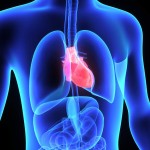Herpes Simplex Virus
30-09-2014 | 1440 View(s)
Herpes simplex virus 1 and 2 (HSV-1 and HSV-2), are two members of the herpes virus family. Herpes virus, generally infect humans . It clears up without treatment within 7-10 days. The herpes simplex virus (HSV-1) is usually responsible for cold sores. In rare cases, cold sores can also be caused by the herpes simplex virus type 2 (HSV-2). This can be a result of having oral sex with someone who has genital herpes. The herpes simplex virus,. Read more...
Coronary Heart Disease (CHD)
30-09-2014 | 1378 View(s)
Coronary heart disease (CHD) is the thinning or blockage of the coronary arteries, usually caused by atherosclerosis. Atherosclerosis (sometimes called “hardening” or “clogging” of the arteries) is the buildup of cholesterol and fatty deposits (called plaques) on the inner walls of the arteries. These deposits can restrict blood flow to the heart muscle by clogging the artery. This result in reduced supply of blood to the heart, thus hear. Read more...
Hemangioma
30-09-2014 | 1478 View(s)
A hemangioma is a benign tumor of the endothelial cells that line blood vessels and is characterized by increased number of normal or abnormal vessels filled with blood. It is generally seen during the first weeks of life and resolves by age 10. It is the most common tumor in infancy. Hemangiomas are connected to the circulatory system. The appearance depends on location. If they are on the surface of the skin, they are evocative of a ripe str. Read more...
Hepatitis
30-09-2014 | 1581 View(s)
Hepatitis is a term used to describe inflammation (swelling) of the liver. It can be caused due to viral infection or when liver is exposed to harmful substances such as alcohol. Hepatitis may occur with limited or no symptoms, but often leads to jaundice, anorexia (poor appetite) and malaise. Hepatitis is of 2 types: acute and chronic. Acute hepatitis occurs when it lasts for less than six months. Chronic is if it persists for longer time. . Read more...
Gonorrhea
30-09-2014 | 1244 View(s)
It is a common human sexually transmitted infection caused by the bacterium Neisseria gonorrhea. It is most common in young adults. The bacteria that cause gonorrhea can infect the genital tract, mouth, or anus. Gonorrhea generally spreads during vaginal, oral, or anal sexual encounter with an infected partner. A pregnant woman can pass it to her baby during childbirth. The usual symptoms in men are burning with urination and penile discharge. Wo. Read more...
Glaucoma
30-09-2014 | 1635 View(s)
Glaucoma is a term used to describe a group of ocular disorders with multi-factorial etiology united by a clinically characterized by intraocular pressure-associated optic neuropath. It is normally associated with increased fluid pressure in the eye (aqueous humour). High intraocular pressure (above 21 mmHg or 2.8 kPa) is the most important and only variable risk factor for glaucoma. However, some may have high eye pressure for years and never de. Read more...
Goitre
30-09-2014 | 1402 View(s)
The term “goitre” simply refers to the abnormal enlargement of the thyroid gland. The swelling of thyroid gland which further leads to a swelling of the neck or larynx (voice box). It can be associated with a thyroid gland that is functioning properly or not. The thyroid gland is a small butterfly-shaped gland in the neck, just in front of the windpipe (trachea). It produces thyroid hormones, which helps to regulate the body's metabolism (the. Read more...
Gastro-Esophageal Reflux Disease (GERD)
30-09-2014 | 1310 View(s)
Gastro esophageal reflux disease (GERD) is a chronic symptom of mucosal damage that is caused due to entry of acid from stomach into the esophagus. The esophagus is a long tube of muscle than runs from the mouth to the stomach. Normally once the food is chewed, it goes from the mouth to the esophagus and then into the stomach, where it is mixed with the acidic gastric juice for digestion. The esophagus and the stomach are separated by a sphincter. Read more...














